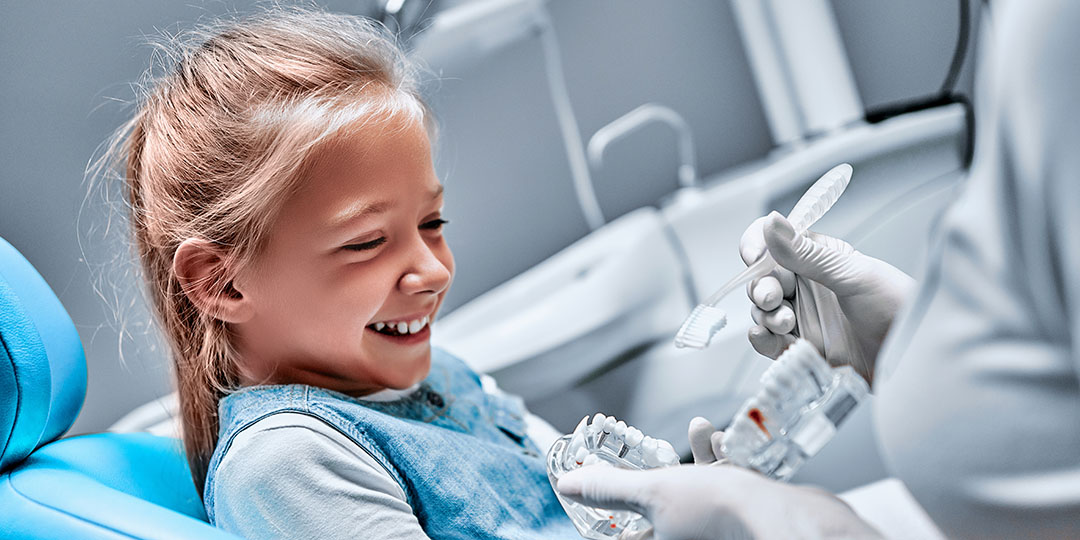Behavior Management Methods
Our pediatric dentists in Greater Lansing, MI, offer a combination of behavior management methods that may help your child be more relaxed and confident during dental treatment.
We will recommend the best behavior management method for your child based on their health history, emotional and intellectual development, dental needs, special health care needs, and parental preferences.
Your child may need a combination of these methods. Since each child is unique in development and responds differently to each of these methods, research studies have shown that there is no 100% guarantee of results for any of the methods described below.
Working together with you, we hope to make your child’s visit as comfortable as possible.
Tell, Show, Do
Our team explains the treatment in words just right for your child’s age and level of understanding, shows the treatment in a simplified manner, and then proceeds with treatment.
Positive Reinforcement
Our and their team will praise your child for any behavior that helps with treatment. Every child does something right during a dental visit!
Distraction
With this technique, our team will choose treatment words carefully, pass instruments out of the child’s sight, and occasionally distract the child’s attention away from the treatment with conversation, music, or games. We have overhead TV monitors for your child to watch their favorite DVD or play video games.
Laughing Gas
Pediatric laughing gas is a form of anesthetic, which is very useful in relaxing an anxious child. Children are introduced to an “elephant nose” or an “astronaut mask” that they wear on their noses and can choose a fun scent such as roses, pizza, chocolate chip cookies, or strawberries.
It is effective only if the child can breathe through their nose by following our directions. It does not put your child to sleep. However, many children become so relaxed that they “nap.”
Sedation
IV dental sedation involves the administration of medication directly into the bloodstream through a small needle. This method allows for a controlled and precise level of sedation, ensuring your child remains comfortable and relaxed throughout the dental procedure.
For this process, our team closely partners with Pediatric Dental Anesthesia Associates whose board-certified pediatric dental anesthesiologists are specially trained to administer sedation for children. This technique is particularly beneficial for young patients who may require extensive dental work or have difficulty sitting still for prolonged periods. allows our dentists to perform necessary procedures efficiently while keeping your child at ease.
General Anesthesia
Medically speaking, general anesthesia is an induced state of unconsciousness. In practical terms, the patient is asleep and unable to respond to touch or voices or is simply “knocked out.”
It is most often recommended for very young children with extensive treatment needs and/or an inability to communicate and cooperate. Sometimes it may also be the best way to provide care for children who require special needs dentistry.
All parents should know that children face the same risk under general anesthesia for dental treatment as for any other surgical procedure. Dental treatment under general anesthesia will be done as a same-day, out-patient surgery at Sparrow Hospital in Lansing.
Parents should talk openly with us about the benefits and risks of general anesthesia.
Speak with Our Pediatric Dentists
Our , are accepting new patients and are proud to serve families throughout the Greater Lansing area. To request an appointment for your child or learn more about our behavior management methods, please call Discover Smiles Pediatric Dentistry at (517) 574-4688. You may also fill out our online contact form and someone from our team will reach out to you soon.


